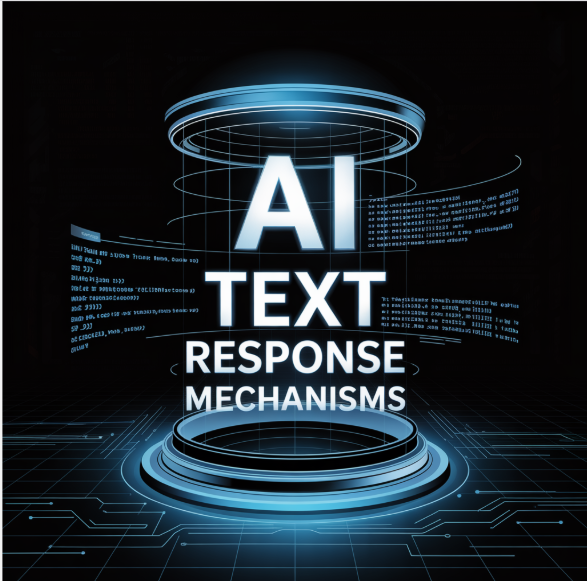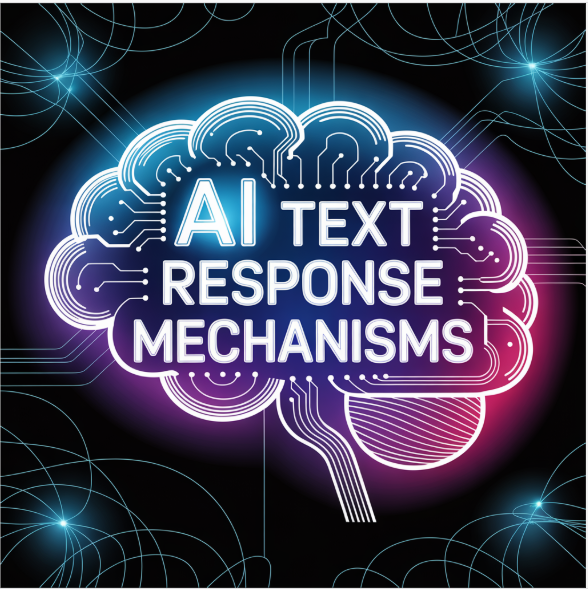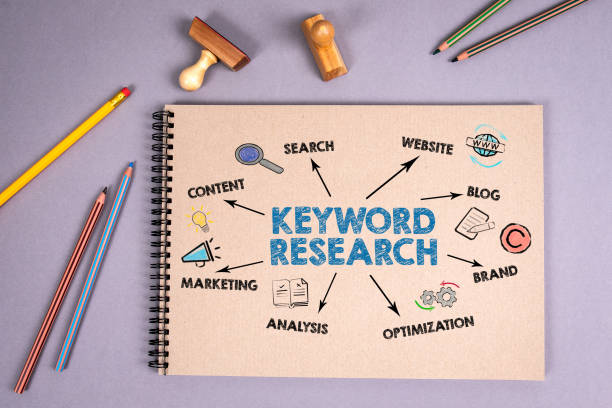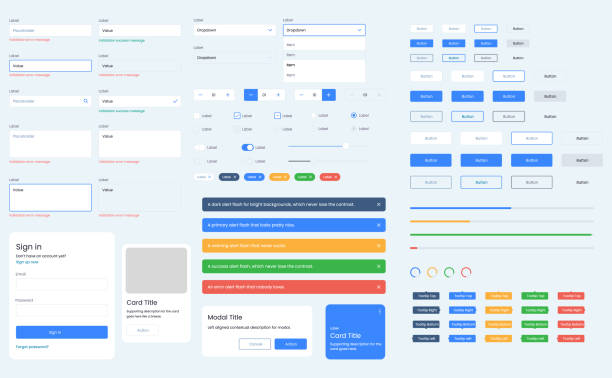how AI Text Response; with in 30min here are the Secrets Inside

Artificial Intelligence (AI) is transforming how we communicate. AI text response mechanisms are at the forefront of this change. They enable machines to understand and generate human-like text.
These systems use advanced technologies like natural language processing (NLP). NLP helps machines interpret and respond to human language. This makes interactions with AI more natural and engaging.
AI text responders are becoming essential tools in various industries. They automate customer service, handle repetitive tasks, and improve response times. Businesses are leveraging these tools to enhance productivity and customer satisfaction.
The rise of AI text reply generators is reshaping communication strategies. They offer personalized responses, tailored to user data and preferences. This personalization makes interactions more meaningful and effective.
Free and paid AI response generators are available. They cater to different needs, from small businesses to large enterprises. These tools are continuously evolving, driven by advancements in machine learning.
Understanding AI text response mechanisms is crucial for anyone interested in AI-driven communication. This article explores their workings, applications, and impact. It aims to educate and inform readers about this exciting technology.
Here is our blog, which helps you with AI Janitor. I hope it will help you enjoy reading.
What Are AI Text Response Mechanisms?
AI text response mechanisms are systems designed to interpret and generate human language. They mimic human interactions using complex algorithms. This makes AI communication more human-like.
These mechanisms rely heavily on natural language processing (NLP). NLP allows machines to understand context, semantics, and syntax. This understanding leads to more relevant and accurate responses.
Here’s a quick look at their key functions:
- Understanding human language: Using NLP, they grasp sentence structure and meaning.
- Generating responses: Based on input data, they create coherent replies.
- Personalizing interactions: They use user data to tailor messages.
Training is vital for these systems. By learning from vast datasets, they improve over time. This training enhances their capabilities, making interactions smoother.
AI text responders aren’t limited to simple tasks. They handle complex inquiries, offering timely support. This adds significant value to businesses.
Moreover, these systems can integrate with platforms like social media and email. This integration enables seamless communication across various channels.
In essence, AI text response mechanisms bridge the gap between human and machine communication. They represent a leap towards more efficient and human-like AI interactions.
The Evolution of AI Text Responders
AI text responders have evolved significantly over the years. Initially, they were simple rule-based systems. These early models could answer basic queries but lacked depth.
With advancements in technology, AI systems became more sophisticated. Machine learning and NLP transformed how text responders functioned. They began to learn from data, improving their responses.
Here are the key phases in their evolution:
- Statistical models: Use of algorithms to predict responses.
- Neural networks: Improved understanding of language context and meaning.
- Deep learning: Enabled more human-like and adaptive conversations.
The introduction of neural networks marked a turning point. AI could now understand context better and hold more natural conversations. This made them more effective in various applications.
Deep learning further pushed the boundaries. It allowed AI text responders to grasp nuances in language. This resulted in more engaging and accurate interactions.
Today, AI text responders are integral in many sectors. They are used in customer service, marketing, and personal assistants. Their ability to learn and adapt makes them indispensable tools in modern communication. Each step forward has brought AI closer to mimicking human interaction more convincingly. This journey continues with ongoing research and innovation.
Core Technologies: NLP, Machine Learning, and Deep Learning
At the heart of AI text response mechanisms lie three fundamental technologies. These are Natural Language Processing (NLP), Machine Learning (ML), and Deep Learning (DL). Each plays a crucial role in enabling AI systems to understand and generate text.
NLP is the bridge between human language and machines. It enables computers to process, analyze, and generate human language. This involves understanding syntax, semantics, and context. NLP is essential for transforming raw text into structured data.
Key Components of NLP:
- Tokenization: Breaking down text into words or phrases.
- Parsing: Analyzing grammatical structure.
- Sentiment Analysis: Determining emotional tone.

Machine Learning advances the capability of AI systems. It allows computers to learn from data without explicit programming. ML models analyze past interactions to predict future responses. This learning process improves over time with more data.
Types of Machine Learning:
- Supervised Learning: Models learn with labeled data.
- Unsupervised Learning: Finds patterns in unlabeled data.
- Reinforcement Learning: Learns by trial and error.
Deep Learning is a subset of ML. It uses neural networks with many layers to simulate the human brain. These networks can handle complex data patterns. Deep Learning empowers AI systems with higher accuracy and understanding.
Deep Learning models excel in recognizing patterns. They can handle images, speech, and text with incredible precision. This technology enables AI to perform tasks previously deemed impossible.
The synergy of NLP, ML, and DL results in advanced AI text responders. Together, they allow AI to mimic human conversation more naturally. Each component contributes to a more responsive and intuitive system.
As technology evolves, these core technologies continue to advance. They pave the way for more sophisticated AI applications. Understanding these fundamentals is key to appreciating the potential and limitations of AI text response mechanisms.
How AI Text Reply Generators Work
AI text reply generators operate through a sophisticated process, combining several technological facets. At their core, these systems convert input text into actionable insights. They then generate human-like responses based on algorithms and data patterns.
When a user inputs a message, the system begins to analyze it. This analysis involves breaking the text into components. Words, phrases, and context are identified for better understanding. Once disassembled, the system comprehensively assesses the input.
The AI system utilizes previous training data during this process. It references a vast reservoir of text data it has learned from. Patterns and similarities are detected to guide response creation. This data-driven approach ensures relevance and accuracy in replies.
Core Steps in Generating Responses:
- Input Processing: Analyzing the text for key details.
- Data Reference: Accessing learned text patterns.
- Response Generation: Formulating a coherent reply.

AI systems employ algorithms to tailor responses to context and sentiment. These algorithms enhance personalization by integrating user data. Preferences and past interactions are considered for a more customized experience.
The AI evaluates the situational context for nuanced replies. Contextual factors like conversation history or user mood are incorporated. The result is a more relevant and meaningful interaction, enhancing user satisfaction.
The generated response then undergoes a refinement process. This step ensures it aligns with human conversational norms. The aim is to produce replies that are indistinguishable from human responses.
Finally, the AI delivers the crafted message to the user. This cycle of analysis and generation repeats with each interaction. Over time, the system improves, becoming more adept at handling varied inputs.
AI text reply generators rely on constant learning and updating. As they receive more data, their ability to understand and respond improves. This continuous development drives the ever-evolving nature of AI text response systems.
Types of AI Text Response Generators
AI text response generators come in various forms, each designed for specific tasks. Their diversity caters to different needs across industries and user expectations. From simple tools to complex systems, these AI models vary significantly in functionality.
Some AI generators are rule-based, relying on predefined sets of if-then rules. These are often straightforward but limited in flexibility. They operate effectively within narrow contexts, offering consistent and predictable responses.
More advanced are machine learning-based generators. These utilize algorithms that learn from large datasets. Unlike rule-based models, they adapt over time, improving with more data. Their capacity to mimic human-like responses is notably higher.
Types of AI Text Response Generators:
- Rule-Based Systems: Fixed replies based on set rules.
- Machine Learning Models: Adaptive and data-driven.
- Neural Network-Based Systems: Use deep learning for complex interactions.

Neural network-based generators, a subset of machine learning, employ deep learning techniques. These systems manage intricate tasks by processing vast amounts of data. They’re adept at understanding context, tone, and style within interactions.
Hybrid models combine various AI methodologies. They integrate rule-based and machine learning approaches for optimal performance. These systems are versatile, offering robust and adaptable communication solutions.
Each type of AI text response generator has its strengths and applications. Selecting the right one depends on specific needs and available resources. As AI technology progresses, these tools will continue to evolve, providing more tailored and efficient solutions.
Key Features of Modern AI Response Generators
Modern AI response generators have evolved significantly, incorporating a wide array of sophisticated features. These enhancements enable more effective, engaging, and human-like interactions with users. In today’s tech-driven world, these features are integral to seamless digital communication.
One key feature is natural language processing (NLP). This enables AI to understand and generate text with human-like nuances. NLP allows systems to interpret slang, idioms, and varying tones of dialogue, enhancing interaction quality.
Advanced sentiment analysis is another crucial aspect. It lets AI discern emotional tones in text, providing contextually apt responses. This ability helps create more empathetic customer interactions, strengthening brand loyalty.
Many AI generators also offer multilingual capabilities. By supporting various languages, they cater to global audiences, expanding a business’s reach. This feature is vital for companies operating in international markets.
Key Features of AI Response Generators:
- Natural Language Processing (NLP)
- Sentiment Analysis
- Contextual Understanding
- Multilingual Capabilities
- Customizable Responses

Contextual understanding is paramount. It empowers AI to recognize conversation flow and intent, ensuring relevance in replies. This leads to smoother and more coherent dialogue, mirroring human conversation patterns.
Customizability remains a significant feature. AI response generators can be tailored to reflect a brand’s tone and style. This personalization helps maintain brand consistency across communication channels, reinforcing brand identity.
With these features, modern AI response tools have transformed how we interact with technology. They offer potent communication solutions tailored to meet diverse user and business needs.
Free vs. Paid AI Response Generators
Choosing between free and paid AI response generators depends on specific needs and resources. Free options often provide basic functionalities, suitable for small businesses or individual use. They allow users to test AI capabilities without financial investment.
Paid AI response generators typically offer advanced features. These include enhanced customization, better support, and more accurate responses. Businesses with higher communication needs might find these features essential for handling complex interactions.
Comparison of Free and Paid AI Generators:
- Free Generators
- Basic functionalities
- Limited support
- Ideal for small tasks
- Paid Generators
- Advanced features
- Comprehensive support
- Suited for complex needs

The cost of paid solutions often correlates with added functionalities. For larger companies, these may include integration with customer relationship management systems. Such integrations can streamline workflows, enhancing productivity and efficiency.
When deciding between free and paid tools should consider long-term goals. Businesses should evaluate whether additional capabilities justify the cost, aligning with their communication strategies. Testing both versions can provide insight into which best meets organizational needs.
Applications Across Industries
AI text response systems are transforming industries with their versatile applications. They enhance efficiency and customer interactions across various sectors. As AI technology evolves, its adoption continues to grow significantly.
In the customer service industry, AI text responders automate routine inquiries. This reduces workload on staff and ensures quick responses. Virtual assistants and chatbots have become integral, providing round-the-clock service.
Key Industries Using AI Text Responses:
- Healthcare
- Patient scheduling
- Automated reminders
- Initial consultations
- Retail
- Personalized shopping experiences
- Order tracking
- Customer support

Within the healthcare sector, AI simplifies patient communication. It facilitates appointment reminders and follow-ups, improving patient care. Doctors use AI for initial consultations, streamlining healthcare delivery.
The financial industry also leverages AI text response tools. These tools automate customer support, dealing with inquiries about account status or transactions. They help banks maintain a high level of service without increased staffing.
In education, AI assists in personalized learning. Students receive automated feedback or answers to common queries. Educational institutions use AI to manage administrative tasks efficiently.
Benefits in Different Sectors:
- Finance
- Transaction inquiries
- Fraud alerts
- Account management
- Education
- Student support
- Administrative automation
- Personalized learning experiences

AI-driven solutions in the marketing industry enable personalized communication. Businesses can target customers with tailored messages, fostering engagement. By analyzing customer data, AI tools create more relevant marketing strategies.
In human resources, AI text responders assist with recruitment. They handle preliminary candidate interactions and scheduling, improving hiring processes. This allows HR professionals to focus on strategic tasks.
The transportation industry also benefits from AI. Companies use automated messaging for tracking shipments and providing real-time updates. This improves customer satisfaction and logistics efficiency.
AI text response mechanisms are being embraced across numerous fields. They offer significant improvements in communication and working efficiency. As AI develops, we can expect even broader adoption and innovation in applications.
Benefits of Using AI Text Responders
AI text responders provide numerous advantages that help businesses and individuals alike. They can automate repetitive tasks, freeing up valuable time for more critical activities. Efficiency and productivity improvements are significant outcomes of using these systems.
One key benefit is enhanced response speed. AI systems can manage multiple queries simultaneously, ensuring quick answers. This feature increases customer satisfaction and fosters a positive perception of a brand’s responsiveness.
Advantages of AI Text Response Systems:
- Improved Efficiency
- Automated communication tasks
- Streamlined operations
- Reduced need for manual intervention
- Cost Savings
- Lower staffing costs
- Minimized working expenses
- Decreased training requirements

Additionally, AI text responders help lower working costs. By minimizing human involvement in routine tasks, businesses save on staffing expenses. This cost efficiency is particularly beneficial for small enterprises looking to optimize resources.
Another advantage is the ability to handle large volumes of communication. AI systems can scale effortlessly, adapting to increased demand without compromising performance. This scalability is invaluable for businesses experiencing rapid growth or seasonal spikes in activity.
AI text responders also offer customization opportunities. They can be tailored to reflect a brand’s tone, style, and values. Personalization helps create more engaging and meaningful interactions with customers.
Moreover, AI responders are capable of learning and adapting. As they collect more data, they improve in accuracy and relevance. This continuous learning process ensures that AI systems keep evolving, providing increasingly effective communication solutions.
Challenges and Limitations
Despite the benefits, AI text responders face several challenges. Understanding these issues can help set realistic expectations and guide development efforts. One common challenge is the complexity of human language itself.
Languages are rich and nuanced, often leading to misinterpretations by AI. Sarcasm, idioms, and cultural references can confuse AI systems. These misunderstandings can result in incorrect or awkward responses that may frustrate users.
AI systems also grapple with context. They may struggle to retain the context of a conversation, especially in lengthy interactions. This limitation can lead to responses that seem off-topic or irrelevant.
Challenges Faced by AI Text Responders:
- Language Nuances
- Difficulty with idioms
- Challenges with sarcasm
- Cultural reference gaps
- Context Retention
- Issues with long conversations
- Trouble maintaining coherence

Furthermore, data privacy concerns pose significant challenges. AI systems require large amounts of data to function effectively. Ensuring user data remains secure and private is crucial but often challenging.
Bias in AI also presents a major limitation. Training data may include biases that the AI unintentionally learns and perpetuates. This bias can lead to unfair or discriminatory responses, impacting user trust and satisfaction.
Lastly, high costs and technological barriers can limit accessibility. Developing sophisticated AI systems requires substantial investment in technology and expertise. Smaller companies may find it challenging to adopt such advanced systems. Addressing these challenges is essential for improving AI text responders and enhancing their application across sectors.
Ethical Considerations in AI Text Response
Ethical concerns are increasingly crucial in AI text response systems. Developers must prioritize transparency and fairness when designing these systems. Clear communication about how data is used and protected is essential for building trust.
Bias is a significant ethical consideration in AI text generation. Systems trained on biased data can propagate stereotypes and misinformation. To mitigate this, developers should carefully curate training datasets and implement bias-detection algorithms.
Key Ethical Concerns in AI Text Responses:
- Data Privacy
- Ensuring user data is secure
- Transparent data usage policies
- Bias and Fairness
- Avoiding stereotypical responses
- Implementing checks for fairness
- Transparency and Accountability
- Clear explanations of AI decisions
- Accountability mechanisms

Privacy is another critical aspect. AI systems process vast amounts of personal data. Ensuring this data remains private and secure is paramount. Developers need to implement robust encryption and security protocols.
Transparency in AI decision-making must also be addressed. Users should understand how AI arrives at specific responses. Providing explanations for AI-driven decisions can increase user trust and engagement.
Finally, accountability mechanisms are vital. Companies must establish processes for addressing grievances and correcting AI-generated errors. Strong ethical practices in AI text response development can lead to more reliable and widely accepted systems.
Integration with Existing Communication Systems
Integrating artificial intelligence text response mechanisms into existing systems requires careful planning. Businesses must ensure compatibility with current communication platforms for seamless operation. This integration can enhance efficiency and user experience.
AI systems can fit into various communication channels. They work well with email, chat, and social media platforms. Such integration allows for consistent and prompt responses across different media.
Key Integration Strategies:
- API Integration
- Use APIs for seamless data exchange
- Platform Compatibility
- Ensure systems support diverse platforms
- User Interface Design
- Create intuitive user interfaces

APIs are crucial for integrating AI with existing systems. They facilitate data exchange and communication between AI solutions and current platforms. API integration ensures that systems can communicate effectively, minimizing disruptions.
Compatibility is vital for successful integration. Systems must support multiple communication platforms and adapt to changing technological environments. This flexibility ensures long-term functionality and user satisfaction.
The design of user interfaces is equally important. Intuitive interfaces encourage user adoption and make interaction with AI text responders straightforward. By focusing on these strategies, businesses can effectively integrate AI and enhance their communication systems.
Customization and Personalization in AI Messaging
Customization of AI messages is crucial for user engagement. Tailoring messages to individual preferences enhances communication. AI systems analyze user data to create personalized experiences.
Personalized messages resonate more with users. They can improve satisfaction by addressing specific needs and preferences. This personalized approach fosters user loyalty and trust.
Aspects of Personalization and Customization:
- User Data Analysis
- Understand preferences and behavior
- Adaptive Response Formats
- Adjust message style to align with user expectations
- Dynamic Content Generation
- Create responses based on real-time data

User data analysis is the cornerstone of personalization. By examining past interactions, AI can predict and fulfill user expectations. This process helps in crafting responses that feel more relatable and genuine.
Adaptive response formats also play a key role. AI systems can modify language style, tone, and complexity to match the user’s communication style. This adaptability makes interactions feel more human-like and considerate.
Dynamic content generation allows AI to tailor messages in real-time. Using current data, AI can adjust responses to provide relevant information instantly. This ability to personalize on the fly enhances the overall user experience.
Improving AI Text Response Quality: Training and Optimization
Enhancing AI text response quality is essential for effective communication. Training and optimization are fundamental in this process. They ensure AI systems are accurate, reliable, and efficient.
Training involves exposing AI to diverse data sets. This exposure enhances language understanding and context recognition. Regular updates and retraining help AI adapt to evolving language trends.
Key Techniques for Improving AI Response Quality:
- Data Augmentation
- Enrich training data with diverse examples
- Algorithm Fine-Tuning
- Adjust parameters for better performance
- Feedback Loops
- Use user feedback to refine responses

Data augmentation broadens the AI’s learning scope. By including varied examples, AI systems can handle a wider range of scenarios and complexities. This technique helps in building robust and flexible AI responders.
Fine-tuning algorithms is also vital. Optimizing model parameters ensures AI systems are not only accurate but also efficient. This fine-tuning helps in reducing response time while maintaining quality.
Implementing feedback loops is critical for continuous improvement. By collecting and analyzing user feedback, AI systems can identify areas for enhancement. This iterative learning process helps in refining responses and boosting overall quality.
The Future of AI Text Response Mechanisms
The future of AI text response mechanisms looks promising with ongoing advancements. These systems are poised to become more sophisticated and intuitive. Enhanced conversational abilities will blur the line between machine and human interactions.
Integration of emotional intelligence will be a key focus. AI will learn to interpret and respond to emotional cues. This development promises more engaging and empathetic AI interactions.
Expected Future Developments:
- Advanced Emotion Recognition
- Understand and react to user emotions
- Contextual Awareness
- Provide responses based on situational context
- Language Versatility
- Support more languages and dialects

Greater contextual awareness will allow AI msto tailor responses to specific situations. This ability will enhance user experiences by making interactions more relevant and timely. Additionally, AI systems will become multilingual, catering to global audiences with improved language support.
By evolving in these ways, AI text response mechanisms will transform how businesses and individuals communicate. These advancements will open up new possibilities for innovation and efficiency in various fields. The integration of such intelligent systems will revolutionize communication strategies across industries worldwide.
Key Takeaways and Best Practices
AI text response mechanisms are transforming communication. They are highly efficient and increasingly versatile. Understanding their capabilities is crucial for leveraging their full potential.
Adopting AI response generators involves several best practices. These practices ensure effective implementation and usage. It is essential to focus on customization, integration, and training.
Best Practices to Implement:
- Customization
- Tailor AI responses to align with your brand
- Effective Training
- Regularly update AI with relevant data
- Monitor Performance
- Continually assess and refine AI interactions
Ensure AI systems align with company goals and customer needs. This alignment enhances user experience and brand consistency. Thorough training ensures the systems remain up-to-date with current language trends.
Monitoring AI performance allows for constant refinement. Regular assessments help identify areas for improvement. This proactive approach is essential for maintaining high-quality interactions. By following these best practices, businesses can maximize the benefits of AI text response mechanisms, fostering improved engagement and satisfaction.
Conclusion
AI text response mechanisms have redefined modern communication. They offer efficiency and personalization. These tools streamline interactions across various industries.
The adoption of AI in text responses is widespread. Businesses benefit from faster response times and improved customer engagement. Customization allows brands to maintain their unique voice.
Despite their advantages, challenges persist. Ethical considerations and limitations must be addressed. Ongoing research will continue to enhance AI systems.
The future of AI text responders looks promising. Innovations will lead to smarter, more adaptive communication tools. As technology advances, AI will increasingly integrate with daily tasks.
Understanding these mechanisms is vital for effective utilization. As industries evolve, staying informed is crucial. Embracing AI in communication strategies offers competitive advantages and growth opportunities.




